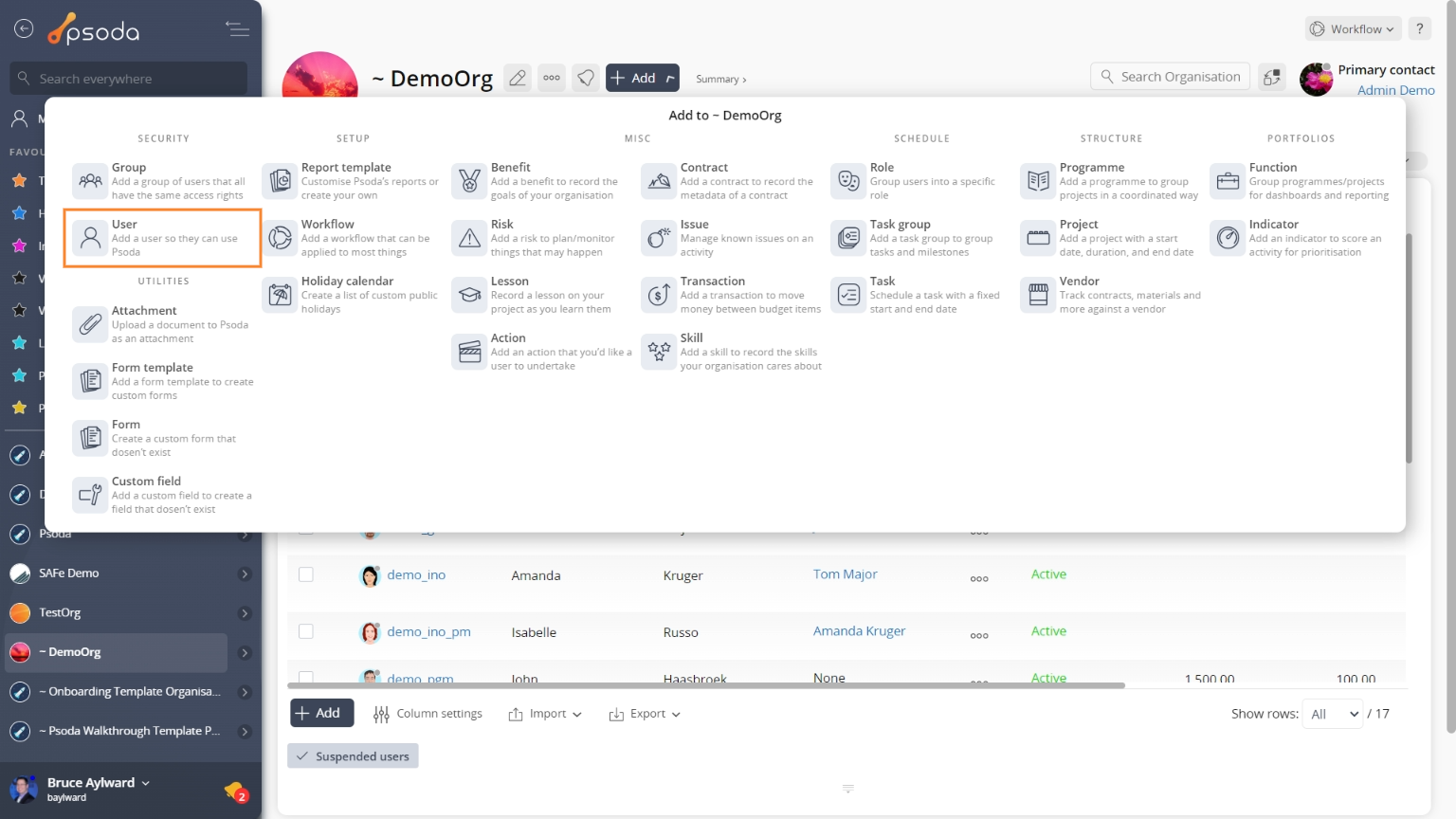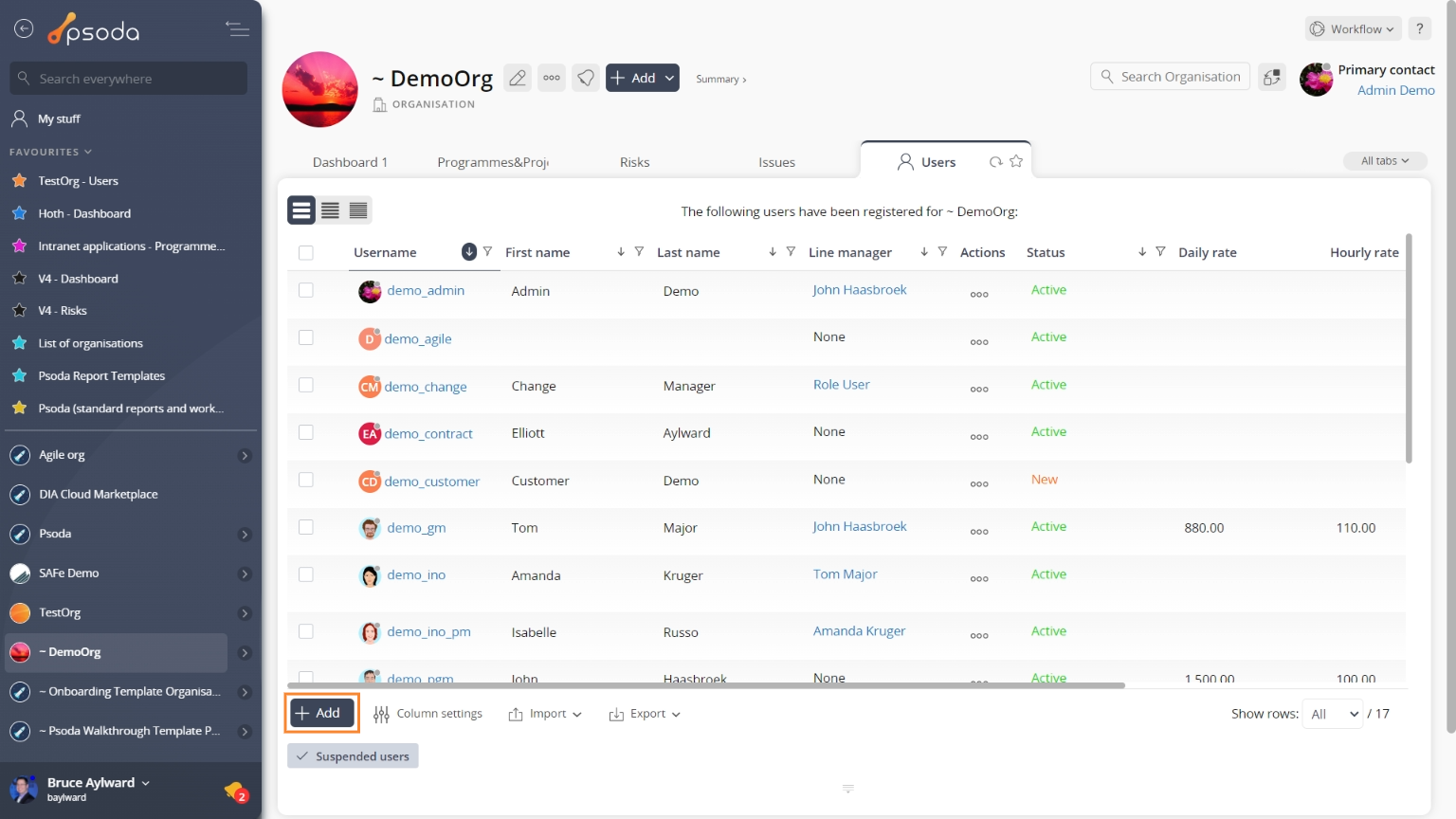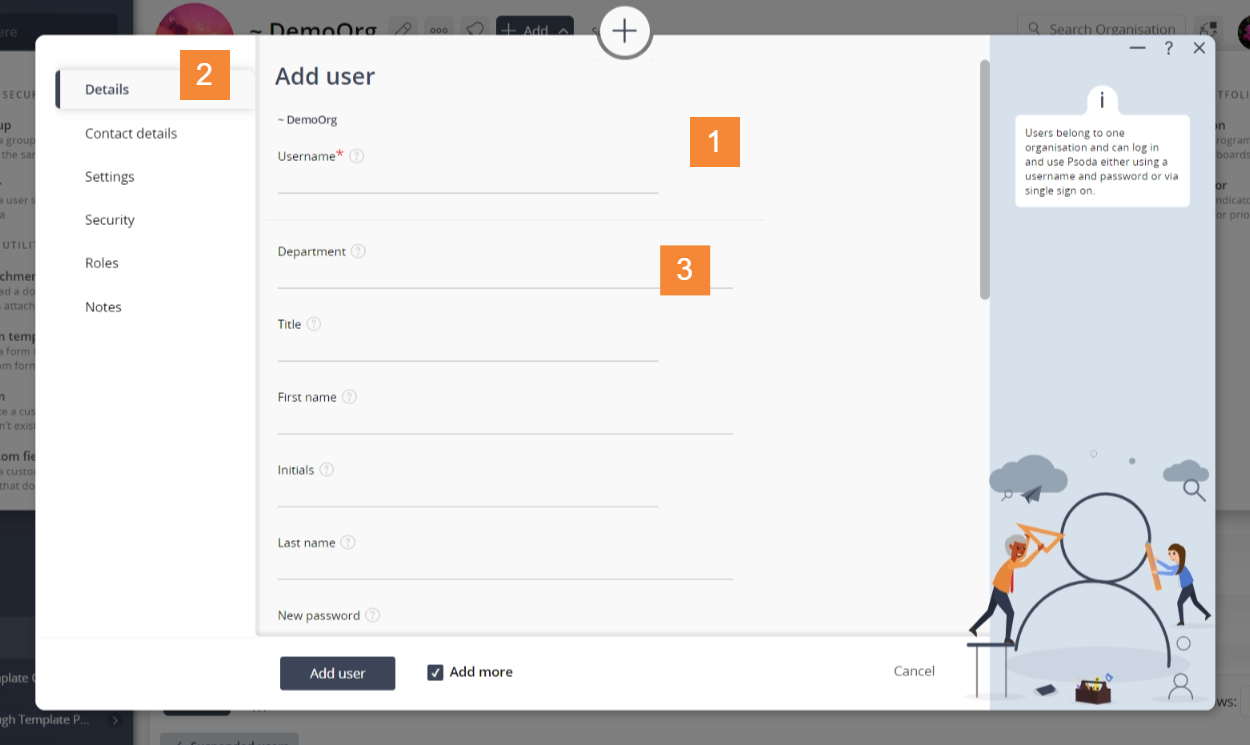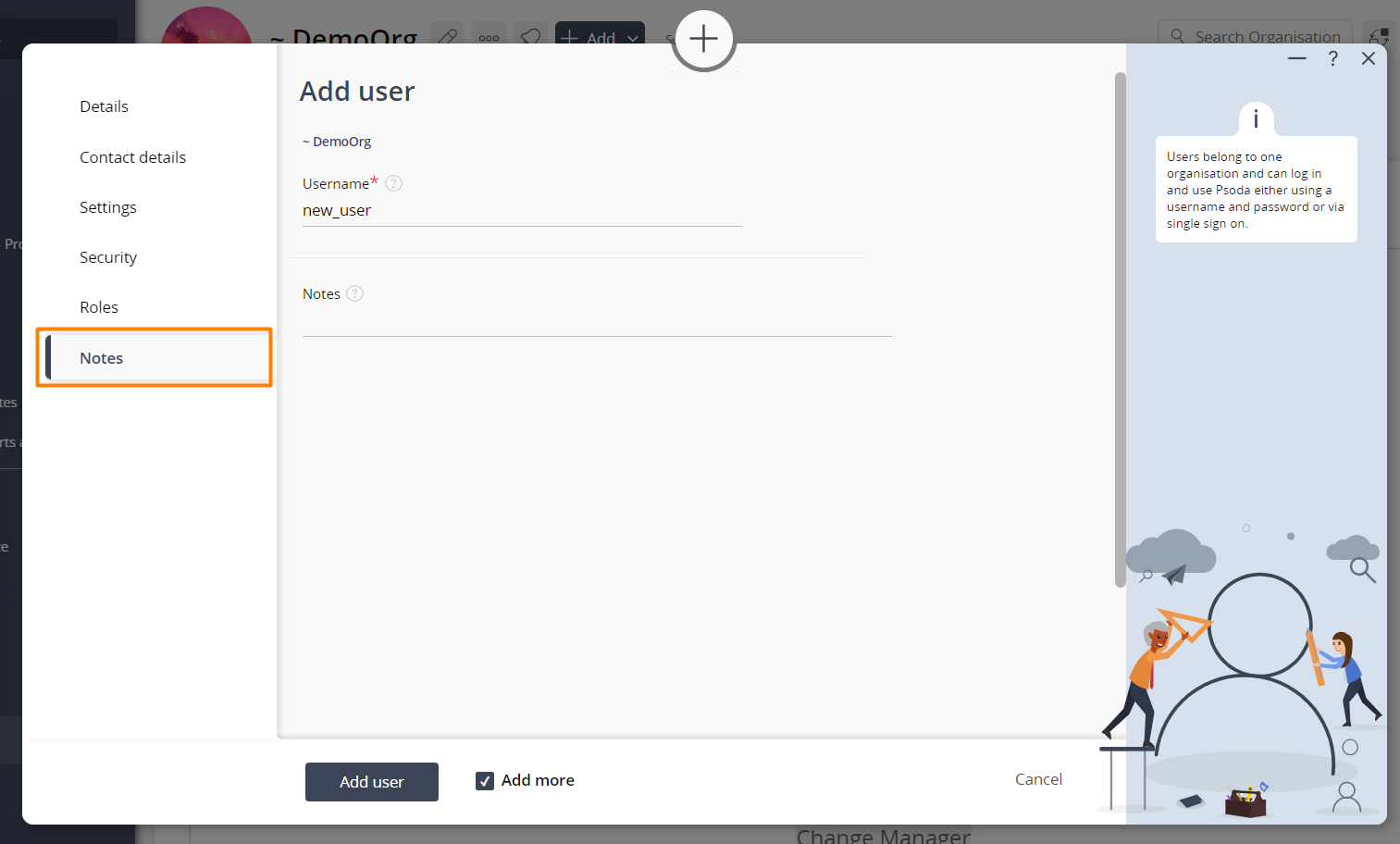Figure 1 – Access via add menu
Figure 2 – Access via user tab
This popup is shown in Figure 3 and is used to add a newFigure 3 – Add user form
In Figure 3 above, the form has been broken down into three sections:
| Section 1 |
Username*:This is where you put the username for the new user you want to add. The username must be unique across the whole system. If you type in a username which is not unique you will be given a warning message. Normally a user’s email address is used as their username to ensure that it will be unique. |
|---|---|
| Section 2 | These are the tabs that you can cycle through to edit each section of the user. When you navigate to a new tabbed view in this popup, any information entered in Section 3 from the previous tabbed view will be saved. This means you do not need to click on any buttons to save each tab, but can instead click on the Add button at the bottom of the popup when you wish to add your new user with the set details. |
| Section 3 | This information will change as you cycle through the tabs shown in Section 2, and the available fields will change accordingly. A breakdown of the field information for each tab is provided below. |
 Details
Details
 Figure 5 – Add user details tab
Figure 5 – Add user details tab
| Department: | Enter the user’s department here, for example R&D. |
|---|---|
| Title: | Enter the user’s title here, for example Mr. |
| First name: | Enter the user’s first name here, for example John. |
| Initials: | Enter the user’s initials here, for example JS. |
| Last name: | Enter the user’s last name here, for example Smith |
| New password: | Enter the new user’s login password here. Although you can add a user with no password that user will not be able to log into Psoda until a valid password has been set for them. |
| Repeat new password: | Repeat the login password here to check that it was typed correctly. |
| Password expired: | Select this check box if you want to set the user’s password as expired and so that it must be changed after the first time the new user logs in. |
| Line manager: | Select the line manager for this new user from the drop-down list. When this user submits timesheets or leave applications they will be allocated to the selected line manager. |
| Custom fields: | The form may include a number of |
| Start date: | Enter the date that the user will start using one of the preset date formats or select the date using |
| End date: | Enter the date using one of the preset date formats that the user will no longer need access to Psoda, for example if the user is leaving the organisation. You may also select the date using |
| Status: | This field will only be visible if you have sufficient access rights. This drop-down list can be used to select the initial state for this user. Refer to the users help page for details on the different states. |
Contact details
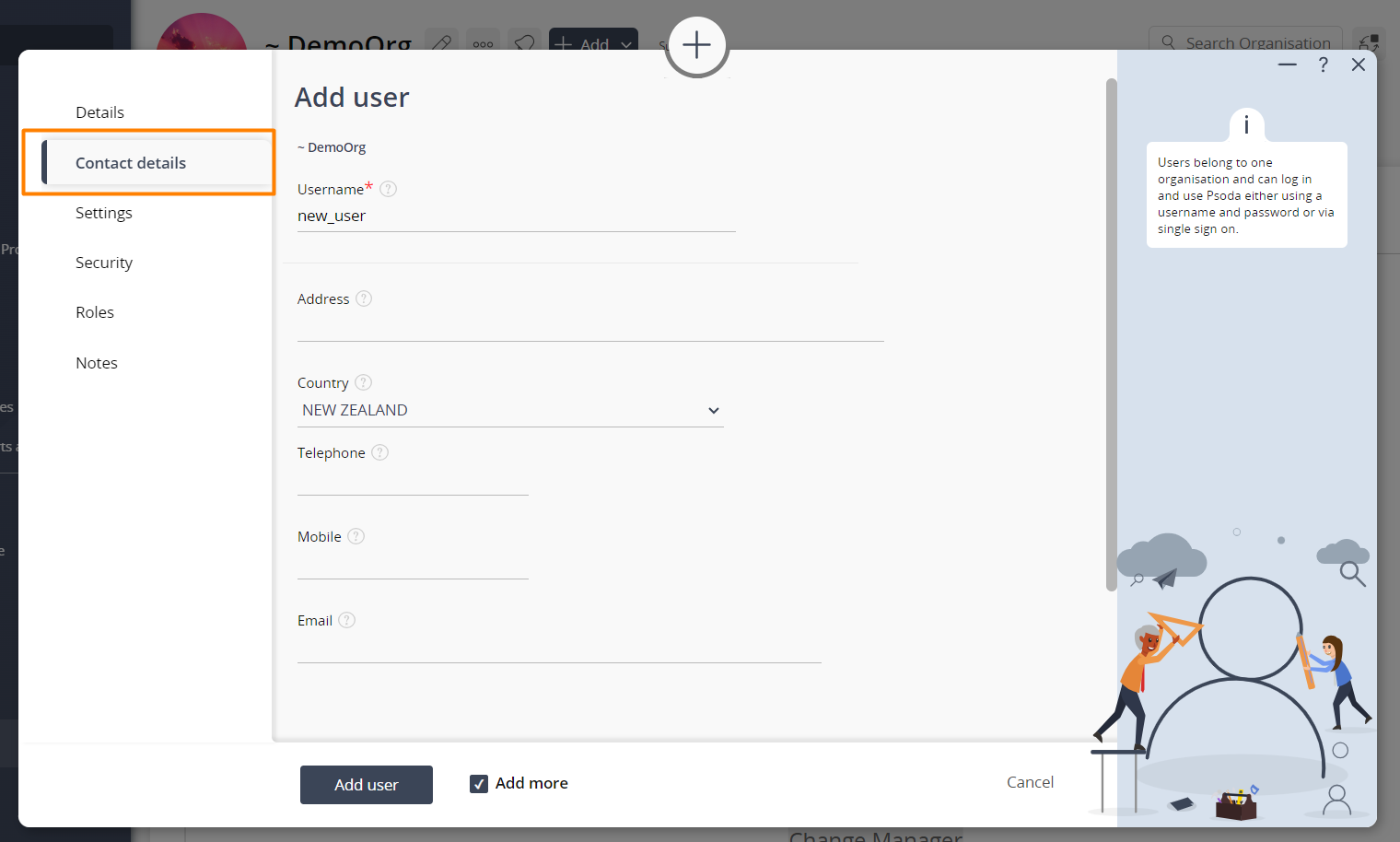 Figure 6 – Add user contact details
Figure 6 – Add user contact details
The contact details for the user can be assigned by clicking on the tab indicated in Figure 6 above. Each of the fields available to be customised in this tabbed view are described in the following table:
| Address: | Enter the user’s physical address here. |
|---|---|
| Country: | Select the user’s country from this drop-down list. |
| Telephone number: | Enter the user’s direct dial telephone number here, for example +64 1 234 5678 |
| Mobile number: | Enter the user’s mobile or cellphone number here, for example +64 21 123 4567 |
| Email address: | Enter the user’s email address here, for example john.smith@psoda.com – This field is required for the user to receive email alerts and |
 Settings
Settings
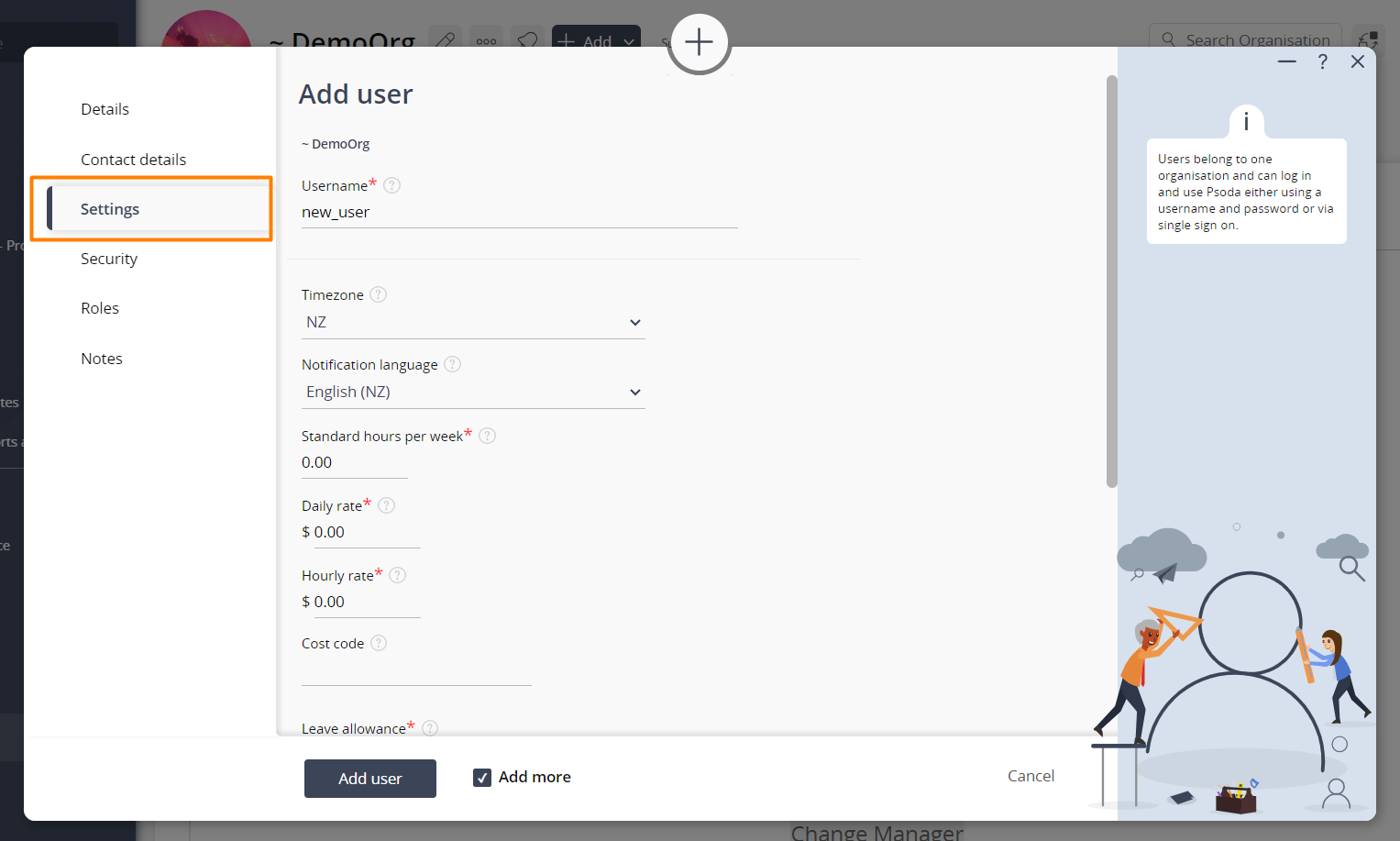 Figure 7 – Add user settings tab
Figure 7 – Add user settings tab
The settings for the user can be assigned by clicking on the tab indicated in Figure 7 above. Each of the fields available to be customised in this tabbed view are described in the following table:
| Timezone: | Select a timezone for the new user using this drop-down list. This timezone will be used to display all timestamps in the system when this user is logged in. By default the timezone is set to UTC. |
|---|---|
| Notification language: | Select the new user’s preferred language using this drop-down list. This language will be used when sending email alerts or notifications to the user. |
| Standard hours per week: | This setting is used to highlight the new user’s |
| Daily rate: | This field will only be visible if you have sufficient access rights.
Set a daily rate for this new user here. The rate currency can be changed by |
| Hourly rate: | This field will only be visible if you have sufficient access rights. Set an hourly rate for this new user here. The rate currency can be changed by editing the organisation details. |
| Cost code: | Enter the cost code related to this user here. This code can be included in data exported to a Financial Management Information System to identify this user. |
| Leave allowance*: | This field will only be visible if you have sufficient access rights.
Set the yearly leave allowance for this new user here. The yearly allowance will be divided by 12 and added to the user’s available |
| Leave available: | This field will only be visible if you have sufficient access rights. This field shows the leave available for this new user. The allowance for the user will be added every month and any approved leave will be subtracted from this number. |
| Sick leave allowance: | This field will only be visible if you have sufficient access rights. Set the yearly sick leave allowance for this new user here. The yearly allowance will be divided by 12 and added to the user’s available sick leave automatically every month. |
| Sick leave available: | This field will only be visible if you have sufficient access rights. This field shows the sick leave available for this new user. The allowance for the user will be added every month and any approved sick leave will be subtracted from this number. |
| Over contracted running balance: | Set the current running balance for over contracted hours here. |
| TOIL approved: | Set the running balance for TOIL hours that have been approved here. |
 Security
Security
 Figure 8 – Add user security tab
Figure 8 – Add user security tab
The security for the user can be assigned by clicking on the tab indicated in Figure 8 above. Each of the fields available to be customised in this tabbed view are described in the following table:
| Groups: | This field will only be visible if you have sufficient access rights.
This field will only be visible is more than one |
|---|---|
| Licence selector: | This field will only be visible if you have sufficient access rights. This area is used to select the licences this new user can have read or write access to or no access at all. For details on each of the licences see the help page for the licence selector. |
| Ignore IP address: | A security feature of Psoda is to immediately log a user out if their session IP address suddenly changes. This could happen if a potential hacker is trying to impersonate that user. Networks with proxy servers or NAT facilities may present multiple IP addresses to the internet. This could cause a ligitimate user to be logged out from time-to-time. If this is happening try to select this check box so that Psoda will ignore changes in the IP address. |
 Notes
Notes
The notes for the user can be assigned by clicking on the tab indicated in Figure 9 above.
Here you can enter some extra notes about this new user. Once you are happy with your entries click the “Add user” button at the bottom of the form. This will add a new user with the details that you supplied. The new user can be viewed in the Users tab asset listing at the parent organisation’s view page, as shown in Figure 10.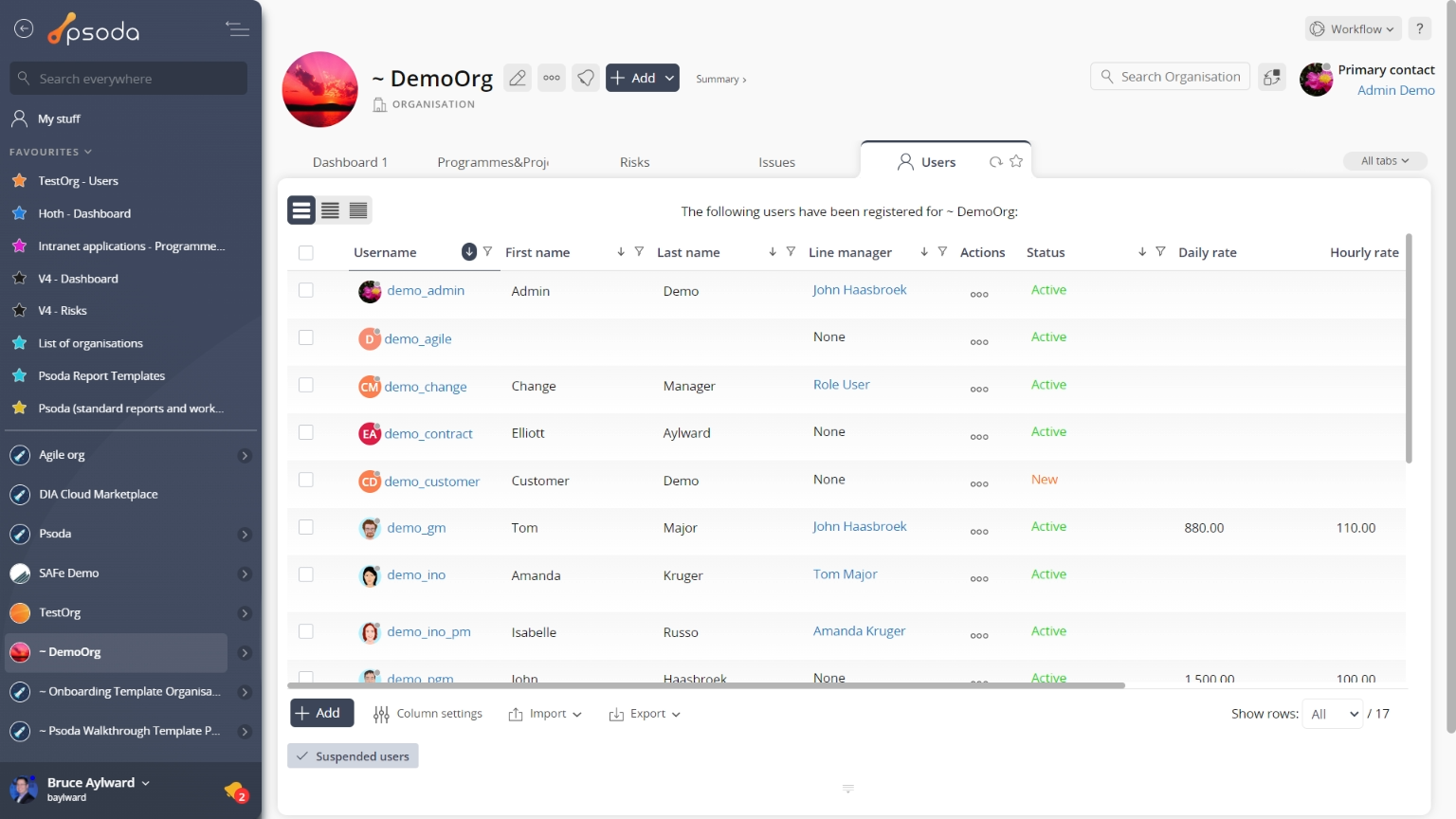
Figure 10 – View from Users tab
Click the “Cancel” button if you no longer want to add a new user.